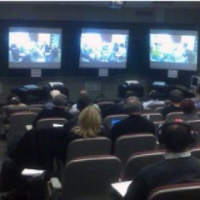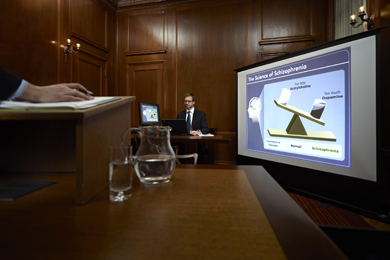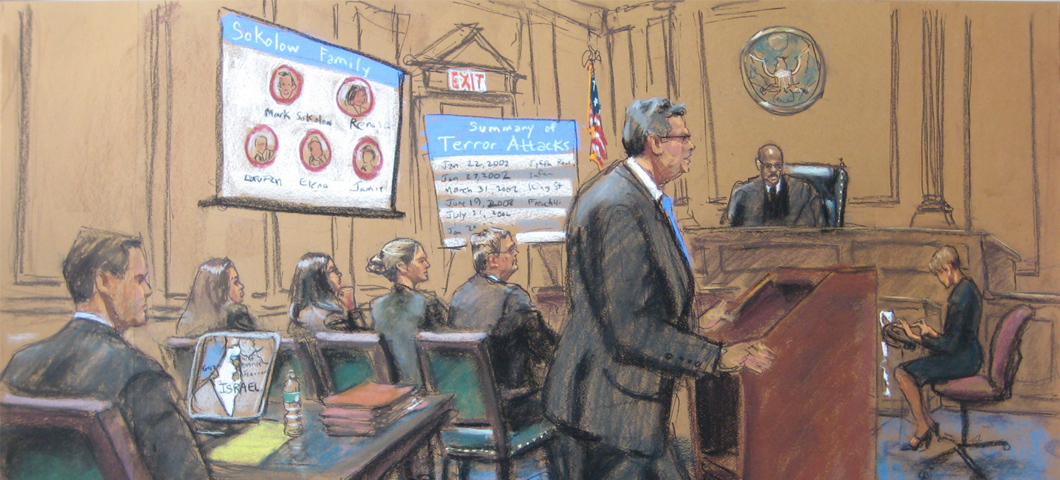Trial Presentation Your Ally for Powerful Evidence Demonstration in Court
Trial Presentation Your Ally for Powerful Evidence Demonstration in Court
Blog Article
Mesmerize the Jury: Necessary Aspects of a Powerful Trial Presentation
In the realm of lawful advocacy, the ability to captivate a court is vital to the result of a trial (trial presentation). Crucial aspects such as comprehending the audience, crafting an engaging narrative, and mastering spoken and non-verbal communication are essential parts of an efficient presentation. The tactical usage of visual help can substantially enhance understanding and retention of key debates. As these elements link, they form a natural technique that not just informs yet also involves jurors on multiple levels. What details methods can absolutely transform a standard discussion right into an unforgettable experience for the court?

Understanding Your Audience
Comprehending your target market is a crucial element of effective test discussion. A successful presentation pivots on the ability to comprehend the demographics, values, and tendencies of jurors. This understanding educates how arguments are framed, evidence is provided, and sob stories are crafted, making sure that the message reverberates with the jurors on an individual level.
Study indicates that jurors come from diverse histories and may have varying levels of comprehending relating to legal proceedings (trial presentation). Hence, it is important to prevent legal jargon that can estrange or perplex them. Rather, employing clear, relatable language cultivates engagement and comprehension. In addition, comprehending the jurors' prospective prejudices and life experiences permits the trial presenter to prepare for arguments and address issues proactively.
Reliable trial presentation likewise involves observing jurors' responses during the procedures. Involving with jurors as people rather than a cumulative device is necessary in fostering a strong link in the courtroom.

Crafting an Engaging Narrative
Crafting an engaging narrative is vital in assisting jurors via the complexities of a case. A well-structured story not just streamlines intricate lawful ideas however additionally engages jurors on a psychological degree, making the information more relatable and unforgettable.
This message should reverberate with the jurors' values and experiences, promoting a connection that goes beyond simple facts. This chronological method can assist jurors adhere to the progression of events, stressing cause and impact.
Integrating human elements-- such as individual stories or narratives-- can further enhance the story's impact. These aspects evoke empathy, allowing jurors to picture the repercussions of the instance on real lives. Furthermore, utilizing a regular style throughout the discussion strengthens the main argument, making it less complicated for jurors to keep essential factors.
Eventually, a compelling story transforms a test presentation from a plain recounting of facts right into an influential story that astounds the court, motivating them to ponder with both factor and emotion.
Using Visual Aids
Integrating visual help into a test presentation can dramatically boost jurors' comprehension and retention of info. Visual products such as graphes, layouts, photographs, and video clips can change complicated lawful concepts and proof into quickly digestible formats. By involving several senses, these aids permit jurors to imagine the instance's essential components, making it easier for them to follow along and realize complex information.
Moreover, well-designed visual help can highlight important factors and emphasize partnerships in between various pieces of evidence. For instance, timelines can effectively illustrate the series of occasions, while annotated photos can make clear specific details pertinent to the case. This not only help in understanding however additionally enhances the narrative offered by the attorney.
It is vital, nonetheless, to make certain that visual help are appropriate, clear, and expertly presented. Extremely complicated or messy visuals may bewilder jurors and detract from the message. When used judiciously, visual help offer to complement the dental arguments and boost the general influence of the trial presentation. Eventually, effective visual communication can be an effective device in persuading jurors and aiding them get to educated verdicts.
Grasping Verbal Interaction
Efficient spoken interaction is essential in a test presentation, as it acts as the main means where lawyers communicate their debates and attach with jurors. Understanding this skill entails clearness, persuasion, and interaction. Attorneys must verbalize their factors plainly and briefly, staying clear of lawful lingo that might confuse jurors. Simplicity in language fosters understanding and aids jurors grasp complex issues offered during find the test.
Furthermore, tone and pacing significantly effect just how messages are gotten. A certain tone communicates authority, while appropriate pacing allows jurors to soak up info without really feeling bewildered. Attorneys need to additionally vary their singing inflections to emphasize bottom lines and maintain jurors' interest throughout the presentation.
In addition, the organization of verbal debates is vital. Structuring the narrative practically and coherently assists jurors comply with the attorney's line of thinking, making it simpler for them to retain important details. Making use of influential techniques, such as narration, can also visite site boost the emotional resonance of the disagreements provided, thereby creating a much more profound connection with jurors.
Ultimately, mastering spoken communication not only strengthens an attorney's situation but likewise fosters count on and connection with the court, significantly improving the opportunities of a beneficial verdict.

Engaging With Body Movement
Nonverbal interaction plays a vital role in test discussions, often conveying messages that words alone can not share. Body movement, incorporating motions, pose, facial expressions, and eye call, considerably influences how jurors regard the reputation and sincerity of the speaker. A positive stance, with shoulders back and an open stance, can instill trust, while closed-off body language may recommend defensiveness or uncertainty.

Face expressions must reflect the feelings related to the instance, enhancing the story existing. For instance, a sincere expression throughout an emotional moment can generate compassion and enhance the psychological charm. Inevitably, grasping Visit This Link body language is necessary for reliable trial presentations, as it improves spoken communication and establishes an engaging existence that resonates with the jury.
Final Thought
Finally, astounding the jury demands a calculated approach that includes recognizing the target market, crafting an engaging narrative, utilizing visual aids, mastering spoken interaction, and engaging via body movement. Each element plays an important duty in creating an effective trial discussion that reverberates with jurors on both emotional and intellectual levels (trial presentation). By integrating these parts effectively, lawful specialists can substantially improve their capacity to encourage and affect jury decision-making
Report this page